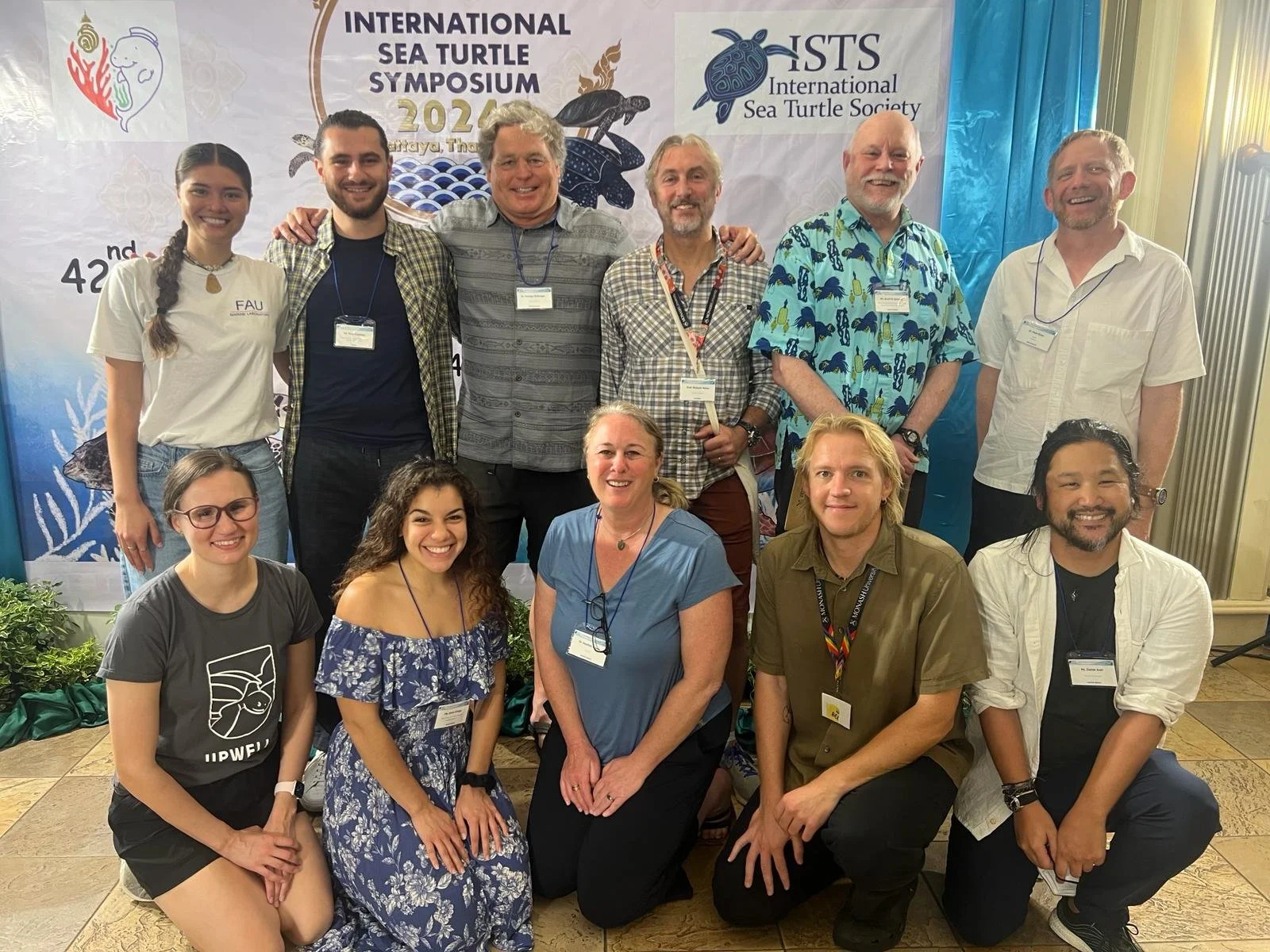Upwell Researcher Anna Ortega models future population dynamics and assesses long-term impacts of proposed conservation interventions for critically endangered sea turtle populations. She is currently pursuing her PhD at the University of Western Australia.
A few weeks ago, sea turtle experts from around the world met in Pattaya, Thailand for our annual conference. At this event each year, we present what we’ve been working on, we form collaborations, we share stories, delicious food, and lots of hugs. This was my third time attending as an Upwell researcher, and I want to share an inside look at the conference, and why it’s such a special event for the sea turtle community.
The first day of the conference is dedicated to workshops. These small group meetings unite people working on similar projects – rescue and rehabilitation, environmental education, drones, the list goes on! I participated in the Bycatch Assessment and Mitigation in Developing World countries workshop, in which I learned about how different projects, countries, and teams are tackling the issue of sea turtle bycatch.
The second day is a day for regional meetings, so that people working in the same geographical regions can come together and share updates. I was honored to be invited to the Western Pacific leatherback meeting, the only meeting focused on a particular species as well as a region. The Western Pacific leatherback population is Critically Endangered, and this meeting marked the beginning of a unified team working towards their conservation. There, I shared some of my work that’s currently in preparation with the Australia state government and Upwell collaborators at Monash University.
Days 3, 4, and 5 encompass over 200 talks broken into themes like “Anatomy, Physiology and Health” or “In-water Biology” and three “Meet the Author” poster nights. My poster was on another chapter of my PhD work which looks at dynamic energy budget theory, which is simply the math behind how organisms grow and reproduce. In short, this means that all the food an animal eats either becomes waste, or is energy allocated to help the animal grow, or to maintain itself. When the animal has grown enough, some of the energy can be allocated to reproduction.
I’m using this theory, with the help of my wonderful supervisor Dr. Nina Marn at The Ruđer Bošković Institute, and some amazing growth data from Dr. Jeanette Wyneken’s lab at Florida Atlantic University to predict 1) how much food a leatherback turtle needs to reproduce, and 2) what temperature and food conditions help them grow and reach reproduction the fastest. This is being combined with Upwell’s work in collaboration with Mercator Ocean International on the Sea Turtle Active Movement Model (STAMM), which models how baby leatherback turtles migrate through the ocean using oceanographic models of currents, temperature, and food conditions.
If we know what foods and temperatures leatherbacks need for fast growth, and we can add that to these oceanographic models that show us where those conditions exist, we can find “optimal migration paths” where baby leatherbacks have the best chance of growing fast. This is important because the faster leatherbacks grow, the sooner they can start allocating energy to reproduce. I absolutely loved poster night.
In my presentation on Day 4, I shared my work on Pacific leatherback bycatch. This work started with a systematic literature review, which means that I searched the whole internet to try and read about every instance a fishing boat had interacted with a leatherback turtle in the Pacific Ocean. This ended up being 514 records from 1982 – 2024, from published scientific articles, to experiments, to surveys of fishers at fishing ports, to governmental reports, to logbooks from observers on fishing boats. We focused on the interactions that resulted in the death of the sea turtle (mortality) and tried to identify patterns that might explain higher mortality, such as the size of the fleet – industrial or small-scale, the type of fishing gear, the target species, the nation fishing, and the region they were fishing in. What this review really taught us is that some nations and some fishing gears are more dangerous than others, and that we need to keep this work going and utilize current technology to account for all the interactions that haven’t been reported in published literature. I’ll be working on all of this during the last year of my PhD!
The end of Day 5 was the Closing Banquet and Awards Ceremony, and I was so surprised and extremely honored to win the Archie Carr Conservation Award for Best Student Oral Presentation. It was even more special that I got to share that moment with my PhD supervisor (and Upwell Executive Director), George Shillinger.
Day 6 was a half day for the 2025 conference location to be announced (Ghana!) and for everyone to say goodbyes and see-you-next-year’s, and then start the journey home to our projects – using this time and these amazing people as our inspiration for the next year of hard work towards sea turtle research and conservation.
It is an honor to be among the many sea turtle experts who get together once a year to share their passion with each other. I am so grateful to Upwell Turtles and The University of Western Australia for supporting my PhD and allowing me to be one of those experts, and Jock Clough Marine Foundation’s Robson & Robertson Award for their financial support of my attendance at this conference.
The International Sea Turtle Symposium is a magical week that reminds us how much incredible work is being done, and why we do it. I already can’t wait to see my turtle family in Ghana next year!








